The dodo (Raphus cucullatus), an extinct flightless bird, was confined to Mauritius, an island in the Indian Ocean to the east of Madagascar. The Rodrigues solitaire, which went extinct as well, was the dodo’s closest genetic relative.

The two were members of the extinct clade of flightless birds known as the Raphinae, which includes the pigeon and dove families.
The Nicobar pigeon is the dodo’s closest surviving relative. It was once believed that a white dodo lived on the nearby island of Réunion. However, it is now recognized that this belief was erroneous because of the likewise extinct Réunion ibis and white dodo paintings.
Discover 10 incredible Dodo facts by reading on.
1. There is No Longer a Single Dodo Specimen Intact

In the 1680s, John Tradescant donated the Dodo specimen to the Oxford University Natural History Museum.
©life_in_a_pixel/Shutterstock.com
Sub-fossilized remains were used to build the dodo skeletons you see in museums. However, there was a whole specimen at one point. In the 1680s, John Tradescant donated the bird specimen to the Oxford University Natural History Museum. The museum burned the rest of the bird on January 8, 1755, due to severe decay, not realizing that it was the last complete specimen in the world. Today, only the head, which still has soft tissue, and the foot are left.
2. Dodos Had Two Cousins That Also Went Extinct

John Tatton, an English sailor, described the dodo as “a giant fowl of the bigness of a Turkey.”
©Stockimo/Shutterstock.com
One of the extinct cousins of the dodo was the solitaire, aka the Pezophaps solitarius. This was a flightless bird about the size of a swan that only existed on the island of Rodrigues. It was distinguished by its long neck and brown and gray plumage. The fact that it was so infrequently seen alongside other birds inspired its name. Sadly, its extinction occurred by the 1760s.
The second extinct cousin was the “white dodo” of Réunion, or Didus borbonicus. This was a yellowish-white bird with black wing tips. John Tatton, an English sailor, first described this bird in a written description published in 1614 and republished in 1626. He described it as “a giant fowl of the bigness of a Turkey.” He said it was very fat and so short-winged that they were unable to fly. John added that there were so many birds on the islands that 10 sailors could gather enough food in a day to feed forty of them.
3. The Dodo Was Basically a Big Pigeon
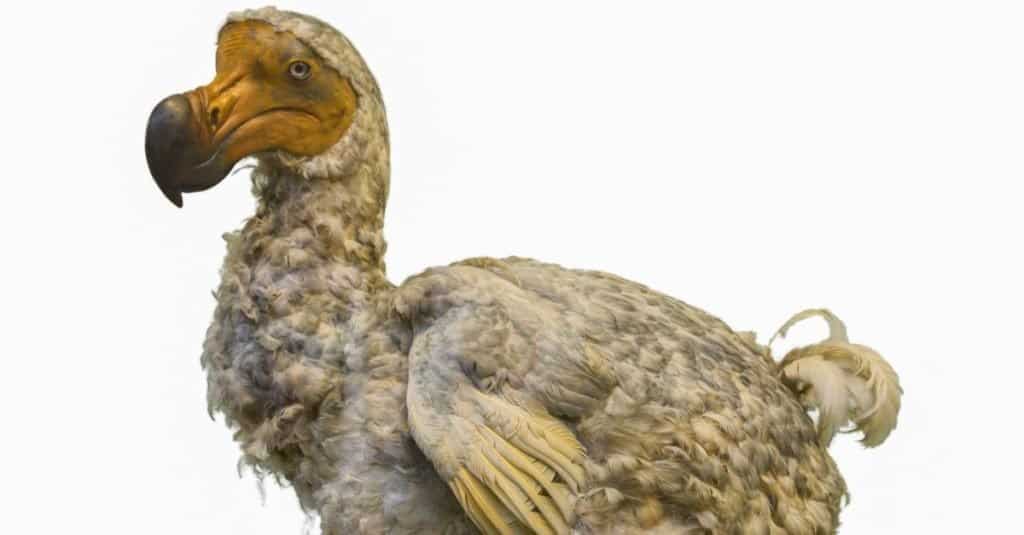
The dodo is related to the pigeon.
©luscofusco/Shutterstock.com
During its time on Earth and long after its extinction, scientists debated among themselves over what kind of bird the dodo was, classifying it variously as a chicken, vulture, eagle, penguin, or crane. Some e experts disagreed, thinking the bird was more like young pigeons. According to studies using DNA extracted from the dodo’s thigh bone at Oxford University in 2007, the dodo is, in fact, related to pigeons.
4. Many People Thought the Dodo Was a Myth
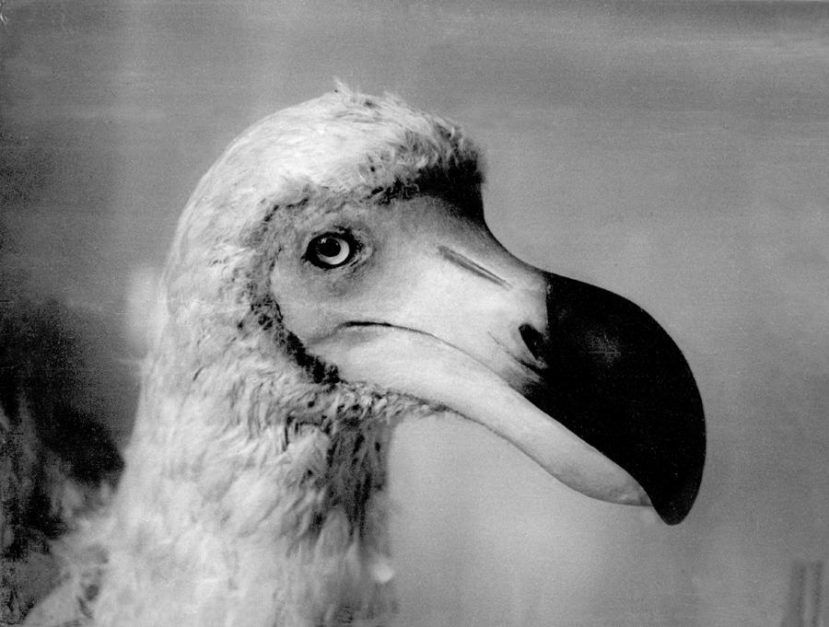
In their 1848 book, The Dodo and Its Kindred, Hugh Edwin Strickland, and Alexander Melville argued for the bird’s existence.
Naturalists who were still alive 150 years after the dodo went extinct can hardly be blamed for thinking the bird was a creation of sailors. In their 1848 book, The Dodo and Its Kindred, Hugh Edwin Strickland, and Alexander Melville argued for the bird’s existence.
5. The Last Dodo Was Seen in 1662

The dodo went extinct due to hunting, habitat damage, and the introduction of invasive species about eight decades after the Dutch arrived.
©Pearson Scott Foresman – Public Domain
The dodo, a bird species known as Raphus cucullatus, became extinct when the last time it was seen was confirmed in 1662. A person named Volkert Evertsz reported this sighting on a small island near Mauritius. Following that, the bird went extinct due to hunting, habitat damage, and the introduction of invasive species like rats and pigs, about eight decades after the Dutch arrived.
6. The Dodo Was Monogamous
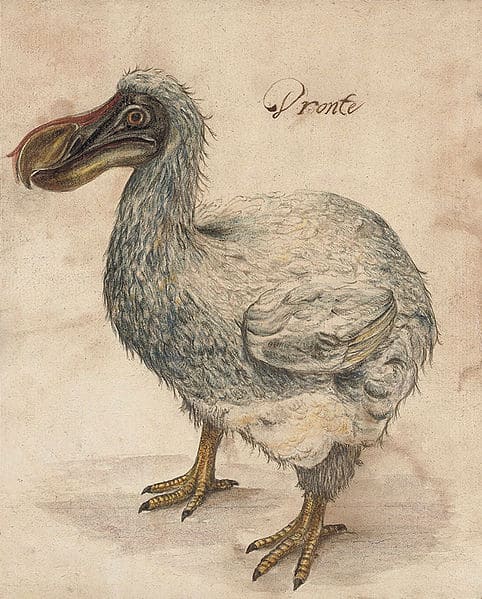
The dodo’s demise was inevitable due to their low reproductive rate (one egg per reproductive cycle).
©Dutch School, 17th Century – Public Domain
Even if these birds were “loyal to their partner and devoted to their offspring,” the species’ demise was inevitable due to their low reproductive rate (one egg per reproductive cycle) and the ease with which predators could pluck their eggs.
7. The Dodo Was Founded On Mauritius Island

Dodo reconstruction (Raphus cucullatus) reflecting new research at Oxford University Museum of Natural History
©Ballista at the English language Wikipedia / Creative Commons
Discovered by the Portuguese in 1507, Mauritius is the largest island in the Indian Ocean, located east of Madagascar. The Dutch declared its name in 1598 and named it after Prince Maurice van Nassau. That same year, the dodo was discovered on the island. Sir Thomas Herbert wrote about the dodo in his 1634 book, “A Relation of Some Yeares Travaille into Afrique,” after visiting Mauritius island in 1627.
8. The Dodo Was Capable of Defending Itself

In his book Crazy Bird, Pinto-Correia claimed dodo birds inflicted terrible wounds on the assailants with their strong beaks!
©Roelant Savery (1576-1639) – Public Domain
The dodo massacre that Pinto-Correia writes about in Crazy Bird occurred long before the first settlers arrived in Mauritius. One account claims that sailors killed and carried back as many as 25 birds. Pinto-Correia adds one sailor claimed the birds retaliated by inflicting terrible wounds on the assailants with their strong beaks!
9. The Dodo Was Depicted As Awkward, But It Likely Was Not
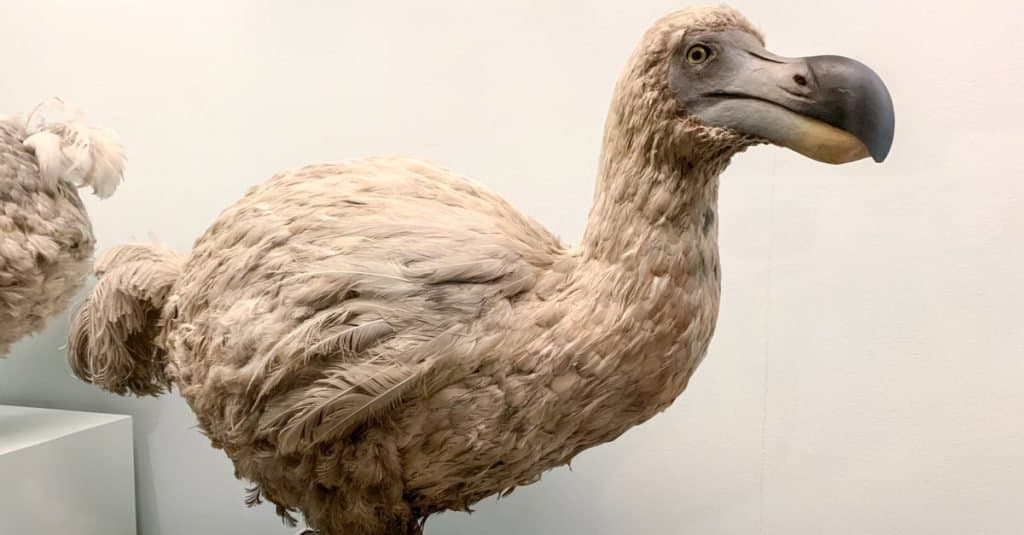
Researchers speculate that the dodo paintings were from captive birds that were overfed or stuffed.
©The Art of Pics/Shutterstock.com
When many of us think of the dodo, we immediately think of the painting created by Rudolf II’s former court painter, Roelandt Savery, who painted it in 1626. Pinto-Correia reports that Savery regularly painted the dodo from memory after Rudolf’s death, leading to inaccuracies in his depictions.
It is also unclear if Savery painted live birds or drew inspiration from myths and preserved specimens. Researchers speculate that the dodo paintings were from captive birds that were overfed or stuffed. It’s possible that weight differences between dodos in the wild could have resulted from a wide range of food availability.
In 1865, Richard Owen of the Natural History Museum used a silhouette from one of Savery’s drawings and petrified bones to assemble the first dodo reconstruction. After releasing his reconstruction and scholarly description, Owens waited three years before realizing he had made some mistakes. Research from the present day suggests that the dodo would have been more erect and would have had a slimmer neck and breast because of the absence of the need for massive muscles in the bosom of these flightless birds.
10. Dodos Travelled To Europe
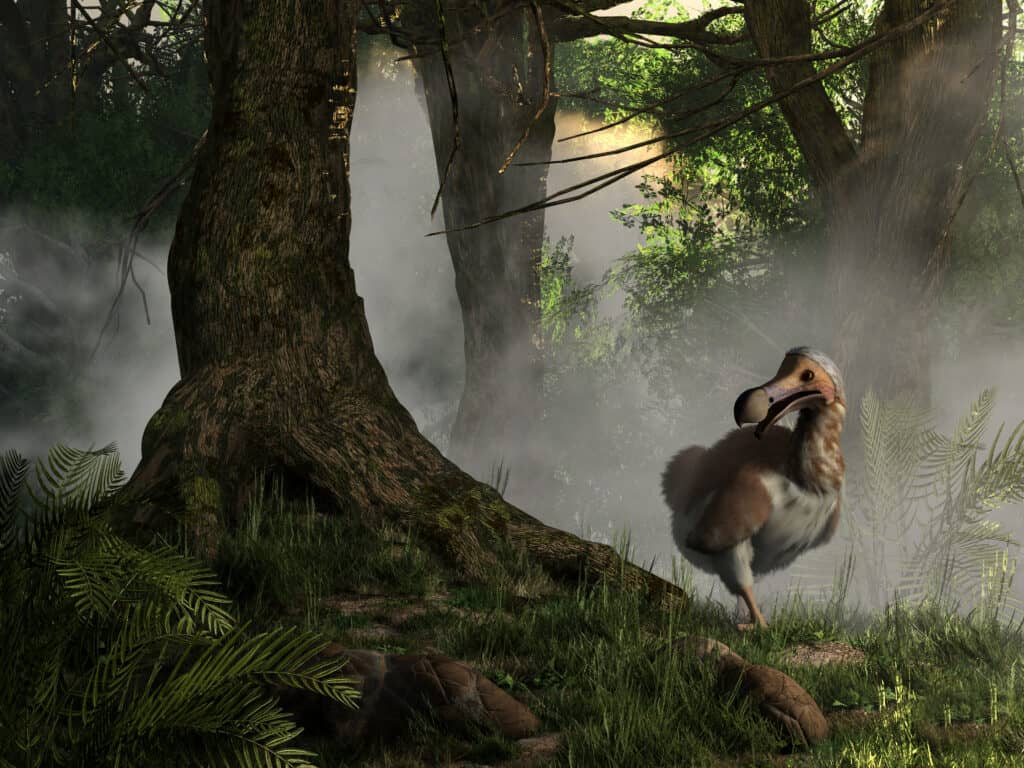
An avian paleontologist of London’s Natural History Museum estimates that only 1-2 dodo birds likely survived the trip to Europe.
©Daniel Eskridge/Shutterstock.com
Centuries ago, it was speculated that as many as 17 dodo birds were transferred to Europe, but no one knows for sure. An avian paleontologist, Julian Pender Hume of London’s Natural History Museum, estimates that only 1-2 likely survived the trip.
It is possible that Admiral Jacob Cornelius van Neck brought the first one to Europe in 1600 when he delivered a specimen to Prague for Hapsburg Rudolf II, the Emperor of Austria and King of Hungary and Bohemia at the time.
Related Animals:
The photo featured at the top of this post is © Daniel Eskridge/Shutterstock.com
Sources
- Wikipedia, Available here: https://en.wikipedia.org/wiki/Dodo
- Britannica, Available here: https://www.britannica.com/animal/dodo-extinct-bird
- Live Science, Available here: https://www.livescience.com/facts-about-the-dodo
Thank you for reading! Have some feedback for us? Contact the AZ Animals editorial team.






